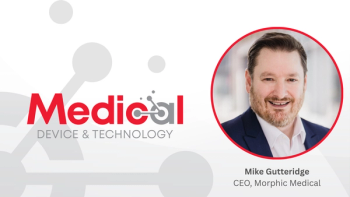
How do physicians find time to provide quality care?
Automating administrative tasks can free doctors to focus on patients’ needs
Imagine for a moment a fantasy world in which physicians can cut back on their hours while still completing the same number of tasks. Sounds great, doesn't it?
Back in the real world, things look pretty dire when it comes to how physicians can manage their time given their clinical and non-clinical workload.
Today, many patients do not receive guideline-recommended
Physicians must be able to better deliver high-quality care to patients. We can't add more hours to the day, so what are the options?
Reclaiming time
For starters, automating tedious
- Improved care: More time with patients means better care.
- Increased revenue: Seeing more patients in a given time increases the amount of money you can earn.
- Financial viability: Administrative tasks take away from time spent with patients. What are these tedious tasks costing your practice?
Unfortunately, the volume of administrative work is only growing for most physicians. Because payers are taking on
Time is money
There are real financial downsides for practices that can't automate administrative work. Lack of focus or attention can quickly lead to falling out of compliance or allowing a contract, which could belong to an essential payer, to expire. If you don't realize a contract has expired, you can no longer bill for patient visits related to that payer – yet another way it can impact your ability to optimize revenue.
Once a practice is out of compliance, it must go through the whole enrollment process again. That could take months, further delaying income and potentially preventing patients from getting proper care. Each administrative task taken alone might not seem like much, but they compound quickly and often become barriers to doing your job, keeping you in good standing, and running your business effectively.
Practice automation
An automated future already exists, with many PCPs relying on technology. Most health care organizations use an electronic medical record (EMR/EHR) and patient billing system to manage the patient journey from medical visit through claims submission. However, when it comes to non-patient tasks, such as payer enrollment, credentialing, state licensing requirements or tracking educational credits, they either complete these manually or by using niche solutions. The average physician contracts with 25 payers and practices in multiple locations, meaning they must repeat the administrative tasks for each payer up to 25 times.
For automation to be truly helpful, it must be scalable and cover a lot of ground. Many existing tools perform one function very well, whether credentialing, licensing, or enrollment but lack an enterprise view centered around a physician profile. As a result, a physician must repeat all these tasks for every submission, which requires much of the same physician profile information – because of that, deploying an enterprise solution that completes many tasks at once is more beneficial for most providers. As automation services become increasingly popular, provider data management platforms have surfaced to offer many, if not all, of these options in one repository.
If you're considering investing in a tool to do the heavy administrative lifting, ask yourself these questions to see what fits your needs:
- Where are you operating? Do you work locally or nationally?
- How do you share information with external entities?
- How many payers in the country do you work with?
Streamlining health care
Creating a health care ecosystem that addresses clinician burnout and worker shortages often seems like a pipedream. The harsh reality that physicians must be both clinicians and administrators results in the waste of billions of dollars and countless hours of patient care.
By deploying scalable, automated solutions, providers are less burdened by work and can spend more time with patients. Additionally, it reduces the cost of care by reducing the effort and resources payers, and providers exert to complete administrative work. As more and more solutions are put into practice throughout the industry, we can expect to see physicians and patients benefit dramatically on a wide scale.
Eric Demers is CEO of Madaket Health, a developer of data management platforms for health care providers.
Newsletter
Stay informed and empowered with Medical Economics enewsletter, delivering expert insights, financial strategies, practice management tips and technology trends — tailored for today’s physicians.


















